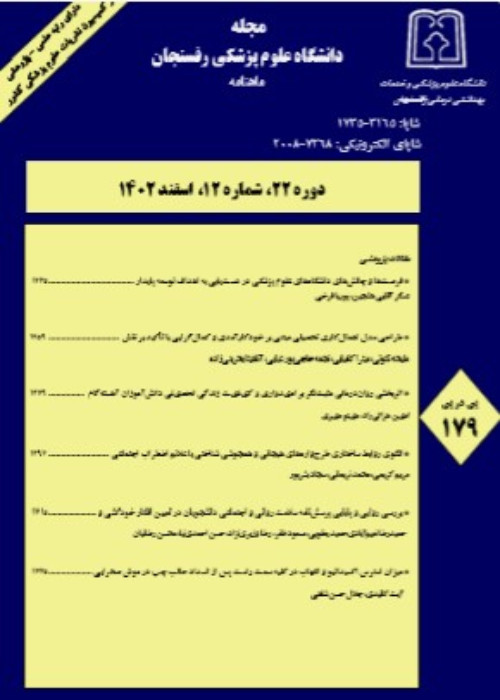The Removal of Chromium from Tannery Industries Effluent
Author(s):
Abstract:
Background And Objective
Tannery industries effluent�contain�100-1000 mg/L Cr+3�and due to changing to Cr+6, its direct disposal into environment is potentiqlly hazardous and threaten the health of humans through contaminating to the environment. In the recent years, many studies have been carried out concerning the removal of heavy metals from synthetic effluent using fungi and algae. The aim of this study as a basic and applied, investigation is to assess the possibility of the growth of Aspergillus niger in tannery effluent and its role in removal of Chromium from these industrial wastes. Materials And Methods
Firstly the chemical quality of tannery effluent was assessed through measuring Cr3+, total organic Carbon (TOC), total kadjeldal Nitrogen (TKN), Phosphate and pH (based on the latest standard methods for examinations of water and waste water). The ratio of carbon to nitrogen was adjusted to the optimal rate (C/N=10) prior to inoculation of 0.04-0.24% (dry weight) of A.niger into the effluent samples contained 122.5-1102.5mg/L of initial chromium. The samples were placed in a shaking incubator at 300C, 150 rpm for 24 h. The rate of fungi biomass growth, the ratio of the grown fungi biomass to the chromium concentration and the percentage of chromium removal were then determined. Results
Findings of this experiment showed that the rate of fungi growth was increased in effluent that was initially contained 122.5 -1102.5 mg/L of Cr+3. However, effluent containing more than 1102.5 mg/L was able to stop the fungi growth. The best values of chromium removal (93.4% was observed at the initial concentration of 245mg/L (dry weight). Also the rate of biomass growth and the ratio of grown biomass to the chromium concentration were 0.4407 % and 18 mg/mg Cr+3, respectively. Conclusion
A.niger has an optimal growth in the tannery effluent at the chromium concentration of 122.5–245 mg/L. Analysis of variance showed that the initial concentration of chromium in effluent and/or the amount of inocalm have a significant effect on the rate of biomass growth and chromium removal efficiency (p<0.001).The chromium removal efficiency and the ratio of fungi biomass to chromium concentration decreases when the concentration of chromium is higher than 245mg/L.Keywords:
Language:
Persian
Published:
Journal of Rafsanjan University Of Medical Sciences, Volume:5 Issue: 1, 2006
Page:
45
magiran.com/p350750
دانلود و مطالعه متن این مقاله با یکی از روشهای زیر امکان پذیر است:
اشتراک شخصی
با عضویت و پرداخت آنلاین حق اشتراک یکساله به مبلغ 1,390,000ريال میتوانید 70 عنوان مطلب دانلود کنید!
اشتراک سازمانی
به کتابخانه دانشگاه یا محل کار خود پیشنهاد کنید تا اشتراک سازمانی این پایگاه را برای دسترسی نامحدود همه کاربران به متن مطالب تهیه نمایند!
توجه!
- حق عضویت دریافتی صرف حمایت از نشریات عضو و نگهداری، تکمیل و توسعه مگیران میشود.
- پرداخت حق اشتراک و دانلود مقالات اجازه بازنشر آن در سایر رسانههای چاپی و دیجیتال را به کاربر نمیدهد.
In order to view content subscription is required
Personal subscription
Subscribe magiran.com for 70 € euros via PayPal and download 70 articles during a year.
Organization subscription
Please contact us to subscribe your university or library for unlimited access!


